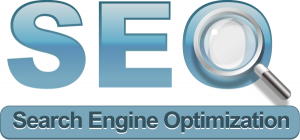One of the best ways to create free local traffic is to get your website ranked in the top three search results for keyword phrases used by your prospects. On average, the number one result for a given search gets about 40% of the total traffic for that keyword! The second result gets about half that, and the numbers decrease dramatically from there. So, if you’re going to get anything at all from your website, you’ve got to be at least in position three.
 The big question is how do you arrive there? Well, the whole science (or art) of getting webpages to rank highly for search results is called search engine optimization, or SEO for short. And, although it’s not rocket science, there are a few things to know.
The big question is how do you arrive there? Well, the whole science (or art) of getting webpages to rank highly for search results is called search engine optimization, or SEO for short. And, although it’s not rocket science, there are a few things to know.
For one thing, you have to “convince” Google that your web page should be ranked for your keyword phrase in the first place. Let’s say your keyword phrase is “auto repair parts.” Without looking at the actual numbers for the searches per month for “auto repair parts,” one would suspect them to be fairly high. But if we’re going to get a web page to rank highly for that keyword phrase in the first place, Google has to “think” the page is actually about auto repair parts.
The point is you’re not going to get a web page whose content is about something else, say “cheap hotels” to rank for “auto repair parts.”
Tip 1: So, how do you get Google to figure out that your page is really about an auto repair parts? Well, first off, you’ve got to write a lot of good content about auto repair parts. And, not only does the content have to be good, but it has to mention that exact phrase, “auto repair parts,” at least 1% of the time. This is your keyword density. So, if you have a 400 word article, the phrase “auto repair parts” should appear in it at least four times, probably more. Some SEO experts use the keyword phrase in the content 3% of the time. That would be twelve times in 400 words.
Tip 2: The next thing you need to do is to use tags in the <head> section of your web page to let Google know that, yes, this page really is about “auto repair parts.”
The HTML for a webpage is basically broken up into two sections, the head and the body. You can see where these sections are by looking at the source code. The head section starts with <head> and ends with </head>. The body section comes next. It starts with <body> and ends with </body>. The body section forms the part of the web page your visitors actually see. The head section has stuff in it that tells the browser how to view the page, and has various bits of information the search engines find useful, like tags.
There’s a title tag, marked <title>, and there are various meta tags marked <meta name=”description”…> and <meta name=”keywords”…>. These tags do exactly what you think they would do. The keywords tag contains keywords that you want the search engines to recognize, and the description tag contains a description of the site. Although not nearly as important as your title tag, the description and keywords tag should at least have your main keyword phrase in them. Your title tag should have your main keyword phrase at the very beginning.
There’s certainly more to know about SEO, but these two tips are enough to get you started. Write your content with at least a 1% keyword density, and fix your title and meta tags, and you’ll be well on your way to having your page rank highly for local search results.